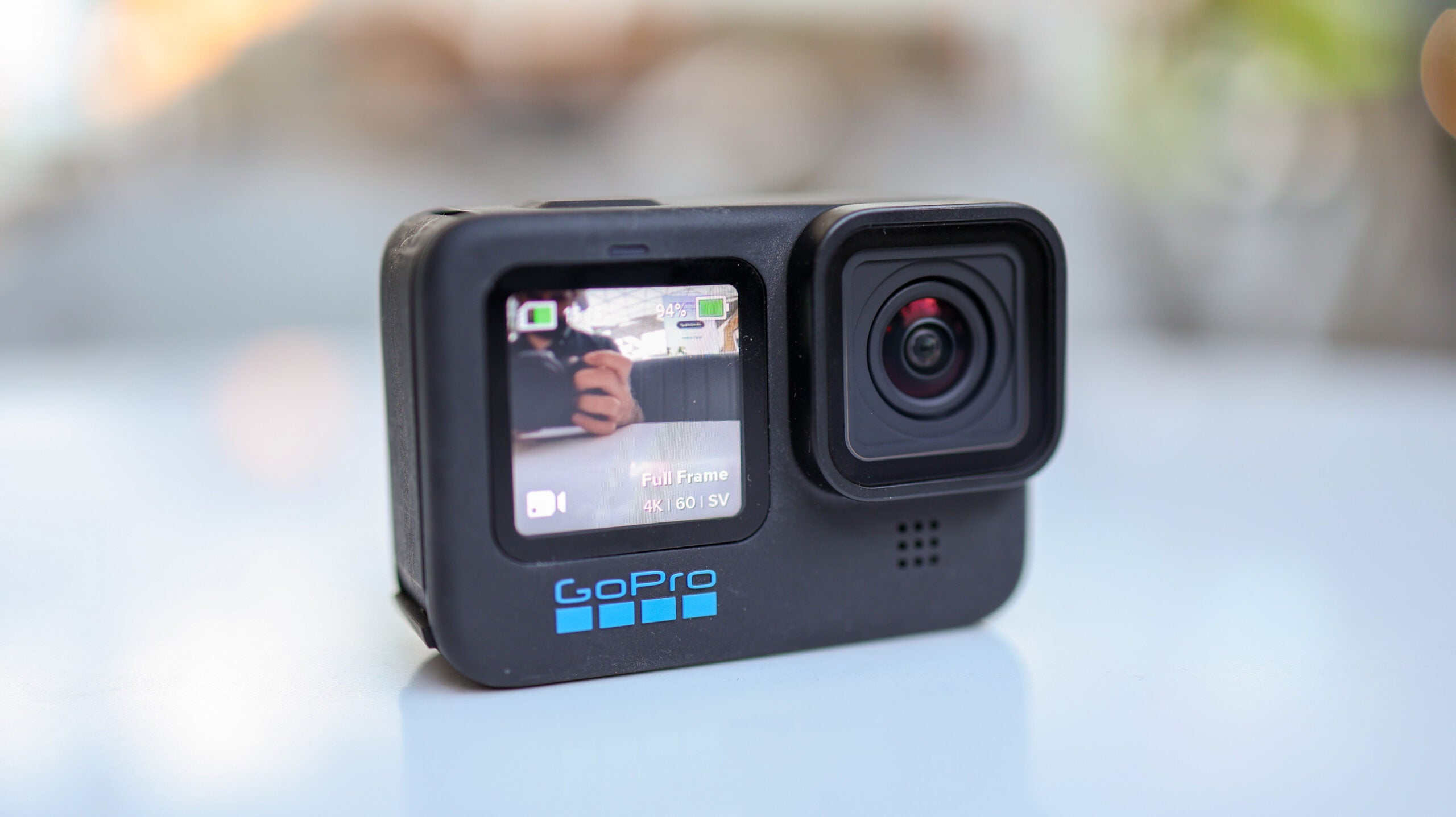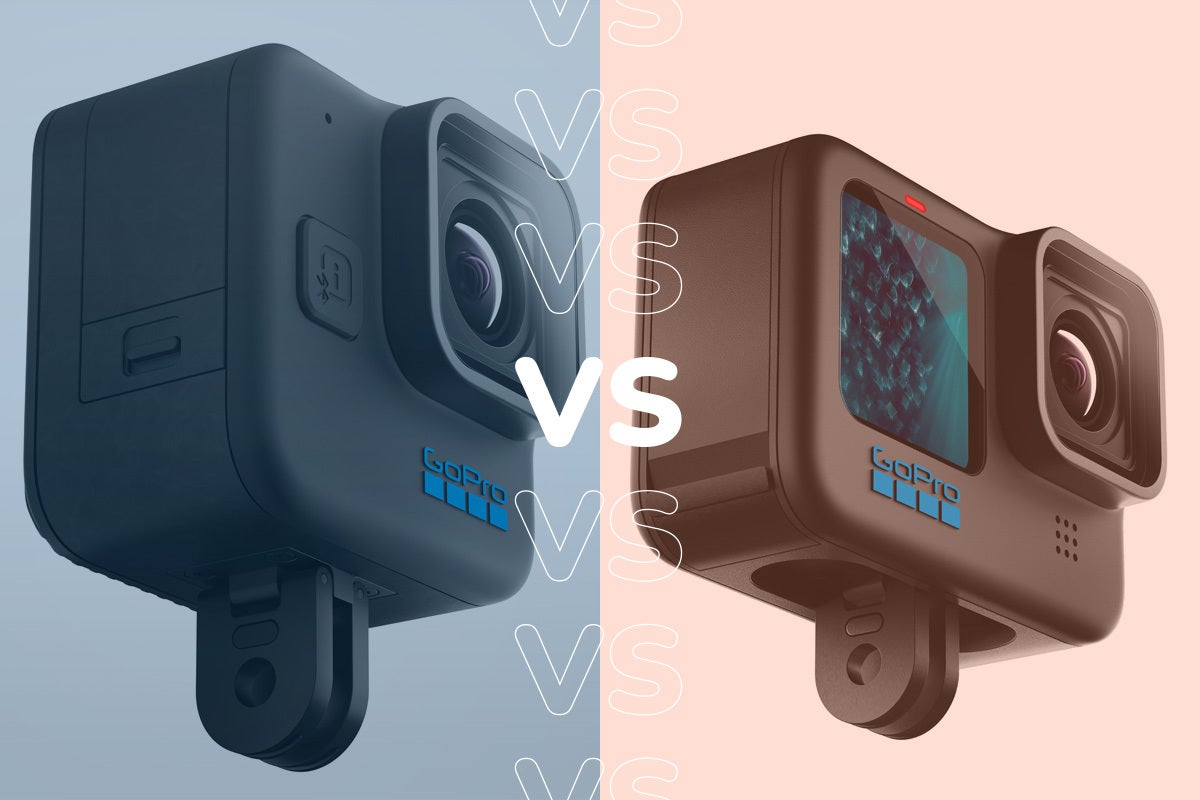GoPro Hero 11 Black vs DJI Osmo Action 3: Which should you get?

The Hero 11 Black is the latest addition to GoPro’s Hero line of action cameras, but how does it compare to DJI’s latest action camera, the Osmo Action 3?
The Hero 11 Black isn’t the only GoPro to come out this year. The company also announced the more affordable Hero 11 Black Mini, a camera with simpler controls and no display for those looking to save a bit of money on the same specs. However, the 11 Black remains the standard model, sharing the same design as its predecessor, the Hero 10 Black.
The Osmo Action 3, meanwhile, marks a significant design update for the DJI action cam series. The camera looks less like the Action 2 and much more like GoPro’s Hero range.
But, are the Hero 11 Black and the Osmo Action 3 truly comparable? Read on to learn how the two cameras stack up to each other when it comes to price, design, specs and battery life.
Pricing and availability
The GoPro Hero 11 Black is available to order now for $399.98/£399.98 with a 1-year GoPro subscription, or $499.99/£499.99 without a subscription.
The GoPro comes with a carrying case, Enduro Rechargeable Battery, curved adhesive mounts, a mounting buckle and thumb screw, a USB-C cable and a free SD card.
The DJI Osmo Action 3 is also available now and around £90-190 cheaper at $329/£309 for the Standard Combo.
This includes an Extreme Battery, a Horizontal-Vertical Protective Frame, a Rubber Lens Protector, a Quick-Release Adapter Mount, a Flat Adhesive Base, a Locking Screw, a USB-C cable and a sticker. However, you will need to pick up an SD card separately.
Design and display
The Hero 11 Black looks identical to its predecessor, the Hero 10 Black.
The action cam is lightweight and compact, measuring 71.8 x 33.6 x 50.8mm and weighing 153g. It’s also incredibly durable, with a water-repelling lens cover and waterproof certification up to 33ft.
The GoPro has two LCD colour displays, one touchscreen on the back and a smaller 1.4-inch display on the front for recording selfies with Live Preview.
Other physical features include a shutter button, Mode button, speaker, microphone, USB-C port, SD card slot and folding fingers on the bottom of the camera. The GoPro is also compatible with more than 40 mounts, mods and accessories.
The DJI Osmo Action 3 looks nothing like the Action 2 that came before it and very similar to the Hero 11 Black. However, the design improves upon the GoPro in a number of ways.
Like the GoPro, the DJI has two displays – a 2.25-inch rear screen and a 1.4-inch front screen. While the front display is the same size on both cameras, the one on the Osmo Action 3 is a touchscreen, meaning you get two touchscreens as opposed to just one.
The camera measures 70.5 x 32.8 x 44.2mm and weighs 145g, making it slimmer and more lightweight than the GoPro. It’s also waterproof up to 16m (around 52ft) without any additional waterproof casing, making it more water resistant than the GoPro.
The Osmo Action 3 features a shutter button, Quick Switch button, speaker, two microphones, USB-C port, microSD slot and two Quick-Release slots. It’s also compatible with voice controls and can offer voice prompts when you’re unable to see the screens.
Finally, as with the GoPro, there’s also a large choice of optional accessories you can purchase separately to pair with the camera.
Performance and features
The specs and performance are where the GoPro truly shines.
The camera packs a new 8:7 sensor that is capable of recording 5.3K video at 60fps, or 4K at 120fps. It can capture more than 1 billion colours with 10-bit colour support and recording up to 8x slo-mo at 2.7K.
The GoPro can also capture 24.7-megapixel stills, while the wider aspect ratio on the sensor means that videos can be delivered as 16:9 and cropped for content creation.

One of the best features of the GoPro is HyperSmooth 5.0. The video stabilisation tech now features an AutoBoost mode and Horizon Lock built-in. There are also features like Hindsight, which captures the 30 seconds before you press record, and a variety of night modes that let you get creative with light.
“The GoPro Hero 11 Black marries impressive video quality with excellent features, best-in-class stabilisation, and a new 8:7 sensor to make it an excellent creator tool”, he wrote in his verdict”, wrote Basil Kronfli in our review of the Hero 11 Pro.
Like the GoPro, the DJI also has a super-wide field of view, reaching up to 155-degrees for immersive footage.
The camera is capable of recording 4K at up to 120fps and up to 8X slo-mo at 1080p, making the resolution slightly lower than the GoPro (though the same at 120fps). Stills are also limited to 12-megapixels – half the size of stills captured with the GoPro – and there’s no 10-bit support at the moment.
Like the GoPro, the DJI comes with video stabilisation in the form of its RockSteady 3.0 technology, which aims to reduce camera shake in all directions. There’s HorizonSteady to keep the horizon level and colour temperature calibration to adjust the white balance underwater. There are also useful app features like InvisiStick which you can use to remove your selfie stick from the frame when skiing or snowboarding.
We haven’t gotten the chance to review the Osmo Action 3 ourselves just yet, so we can’t comment on the performance. However, we will update this versus guide when we have tested the camera firsthand.
Battery life
The GoPro comes with the 1760 mAh Enduro battery, which offers improved recording times in both moderate and cold temperatures compared to the battery in the Hero 10 Black.
The DJI, meanwhile, packs a 1770 mAh, which the company likewise claims has been given an upgrade in low temperatures.
The camera also has the added advantage of fast charging support, which allows the battery to be charged up to 80% in just 18 minutes for around two hours of shooting.
Early verdict
Visually, the Hero 11 Black and the Osmo Action 3 look very similar. However, when it comes to the design, the DJI camera actually builds upon the GoPro in a number of areas.
That said, the GoPro still appears to come out on top when it comes to its spec sheet, including video resolution, image quality and 10-bit colour.
However, you’ll have to wait for our full review of the Osmo Action 3 for our final verdict.





